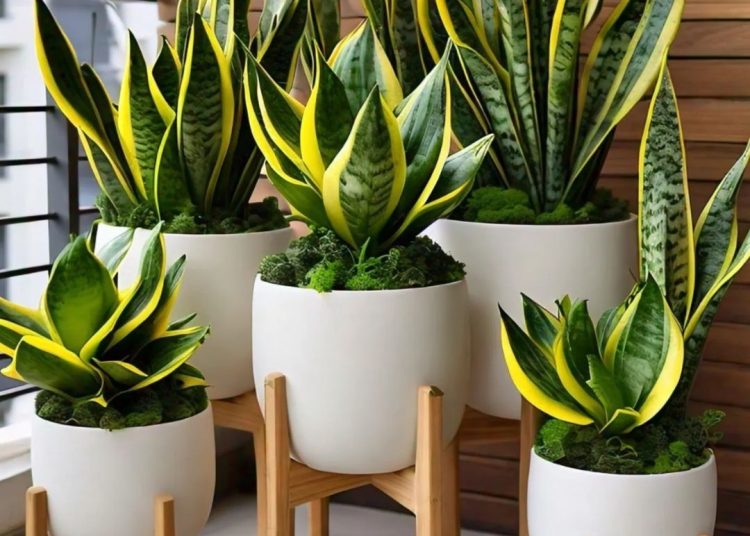How to Care for a Snake Plant: The Complete Guide
Snake plants (Sansevieria), also known as mother-in-law’s tongue, are some of the easiest and most resilient houseplants you can grow. With their striking upright leaves and air-purifying abilities, they’re perfect for both beginners and busy plant owners. Here’s everything you need to know to keep your snake plant thriving.
1. Light Requirements
- Best: Bright, indirect light.
- Tolerates: Low light and even some direct sunlight.
- Tip: If placed in low light, growth will be slower, but the plant will still survive. Rotate the pot every few weeks to ensure even growth.
2. Watering Schedule
- Rule of Thumb: “Less is more.” Snake plants are drought-tolerant and prone to root rot if overwatered.
- Spring–Summer: Water every 2–3 weeks, allowing the soil to dry out completely between waterings.
- Fall–Winter: Reduce watering to once a month or less.
- Tip: Always check the soil with your finger before watering—if it’s dry 2 inches deep, it’s time to water.
3. Soil & Potting
Snake plants need well-draining soil to avoid soggy roots.
- Best Mix: A succulent or cactus potting mix.
- DIY Mix: 2 parts potting soil + 1 part perlite + 1 part coarse sand.
- Pot Choice: Use a pot with drainage holes to prevent water buildup.
Read more: What Kind of Soil for Snake Plant – full guide to the best soil mixes and how to make your own.
4. Temperature & Humidity
- Ideal Temperature: 60–85°F (16–29°C).
- Avoid: Temperatures below 50°F (10°C) and sudden drafts.
- Humidity: Average household humidity is fine; snake plants don’t need misting.
5. Fertilizing
Feed lightly during the growing season (spring and summer).
- Fertilizer Type: A balanced houseplant fertilizer diluted to half strength.
- Frequency: Once every 4–6 weeks.
- Tip: Avoid fertilizing in fall and winter when the plant is dormant.
6. Pruning & Cleaning
- Remove damaged or yellowing leaves by cutting them at the base.
- Wipe leaves with a damp cloth every month to remove dust and keep them looking fresh.
7. Repotting
Snake plants like being slightly root-bound. Repot only every 2–3 years or when the roots start to crack the pot.
- Best Time: Spring or summer.
- Process: Use fresh, well-draining soil and a pot just 1–2 inches larger in diameter than the old one.
Read more: How to Repot a Snake Plant – step-by-step repotting instructions and aftercare tips.
8. Propagation
If you want more snake plants, you can easily grow new ones from cuttings or division.
Read more: How to Propagate Snake Plant – leaf cuttings, rhizome division, and water propagation methods.
9. Common Problems & Solutions
- Yellow Leaves: Usually a sign of overwatering.
- Soft, Mushy Leaves: Root rot—remove affected parts and repot in fresh soil.
- Wrinkled Leaves: Underwatering or very dry air.
10. Pet Safety
Snake plants contain saponins, which are mildly toxic to cats and dogs if ingested, causing vomiting or diarrhea.
Read more:
11. Prevention and control of pests
Snake plants can be susceptible to pests, although they are generally disease-resistant. Common pests on snake plants include mealybugs, spider mites, and some fungi.
To prevent and treat pests, you should regularly check the leaves, remove pests by hand or use natural pesticides such as neem oil to spray the plant, and ensure the plant's living environment is well-ventilated and not too humid.
Expert Tips for Thriving Snake Plants
Even though snake plants are famously low-maintenance, a few pro tricks can make them grow stronger, look healthier, and live for decades.

1. Let the Soil Dry Completely
Overwatering is the number one killer of snake plants. Wait until the top 2–3 inches of soil are bone dry before watering again.
2. Use a Terra Cotta Pot
Clay pots “breathe” and help excess moisture evaporate, reducing the risk of root rot.
3. Wipe the Leaves
Dust blocks sunlight from reaching the leaves. Wipe them with a damp cloth once a month for a healthy shine.
4. Rotate for Even Growth
Snake plants naturally grow toward the light. Rotate the pot every few weeks to keep it upright and symmetrical.
5. Feed Lightly
Use a diluted balanced fertilizer during spring and summer, but skip it in fall and winter to avoid weak, leggy growth.
6. Protect from Cold
Keep them away from drafty windows in winter—temperatures below 50°F (10°C) can cause leaf damage.
7. Divide Overcrowded Plants
When your plant gets too dense, divide it into smaller clumps. This not only gives you more plants but also improves airflow and growth.
8. Give Them a Summer Vacation
Place them outdoors in bright, indirect light during warm months. Fresh air and natural humidity can boost growth.
Final Thoughts
Snake plants are nearly indestructible when given the right conditions: bright indirect light, well-draining soil, and minimal watering. With just a little attention—and a few expert tips—they’ll reward you with years of beauty and fresh, clean air in your home.
















